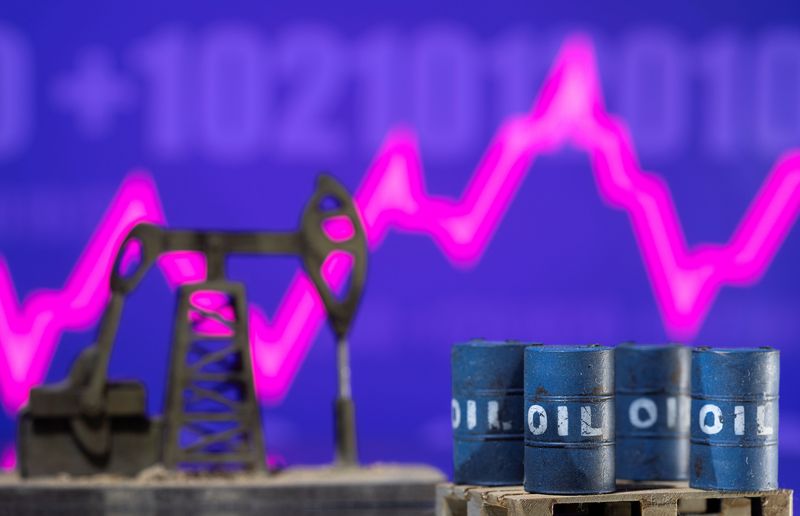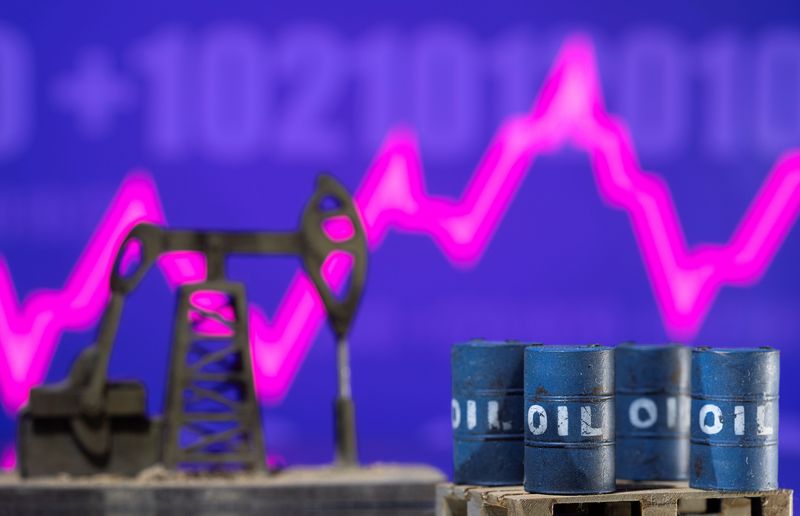
By Arunima Kumar
(Reuters) – Oil prices climbed on Tuesday reversing earlier declines, as fears of tighter Russian and Iranian supply due to escalating Western sanctions lent support.
Brent futures were up 61 cents, or 0.80%, to $76.91 a barrel at 1119 GMT, while U.S. West Texas Intermediate (WTI) crude climbed 46 cents, or 0.63%, to $74.02.
It seems market participants have started to price in some small supply disruption risks on Iranian crude exports to China, said UBS analyst Giovanni Staunovo.
Worries over supply tightness amid sanctions, has translated into better demand for Middle Eastern oil, reflected in a hike in Saudi Arabia’s February oil prices to Asia, the first such increase in three months.
Also in China, Shandong Port Group issued a notice on Monday banning U.S. sanctioned oil vessels from its network of ports, according to three traders, potentially restricting blacklisted vessels from major energy terminals on China’s east coast.
Shandong Port Group oversees major ports on China’s east coast, including Qingdao, Rizhao and Yantai, which are major terminals for importing sanctioned oil.
Meanwhile, cold weather in the U.S. and Europe has boosted heating oil demand, providing further support for prices.
However, oil price gains were capped by global economic data.
Euro zone inflation accelerated in December, an unwelcome but anticipated blip that is unlikely to derail further interest rate cuts from the European Central Bank.
“Higher inflation in Germany raised suggestions that the ECB may not be able to cut rates as fast as hoped across the Eurozone, while U.S. manufactured good orders fell in November,” Ashley Kelty, an analyst at Panmure Liberum said.

Technical indicators for oil futures are now in overbought territory, and sellers are keen to step in once again to take advantage of the strength, tempering additional price advances, said Harry Tchilinguirian, head of research at Onyx Capital Group.
Market participants are waiting for more data this week, such as the U.S. December non-farm payrolls report on Friday, for clues on U.S. interest rate policy and the oil demand outlook.
This post is originally published on INVESTING.




